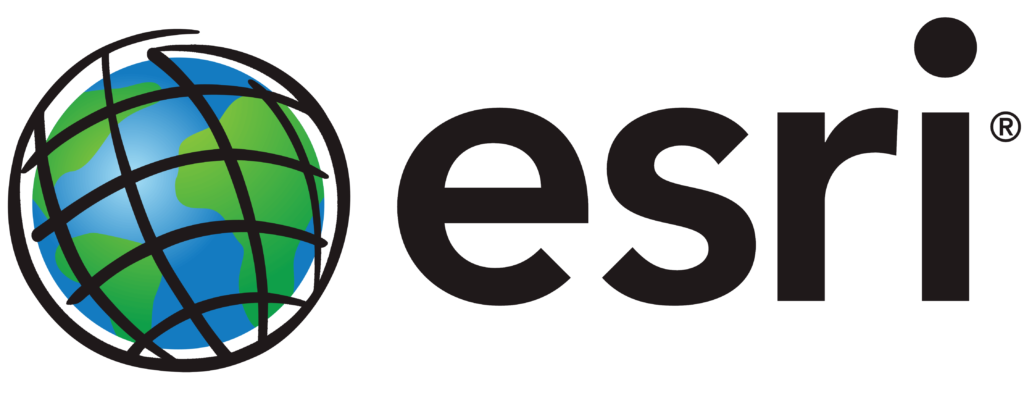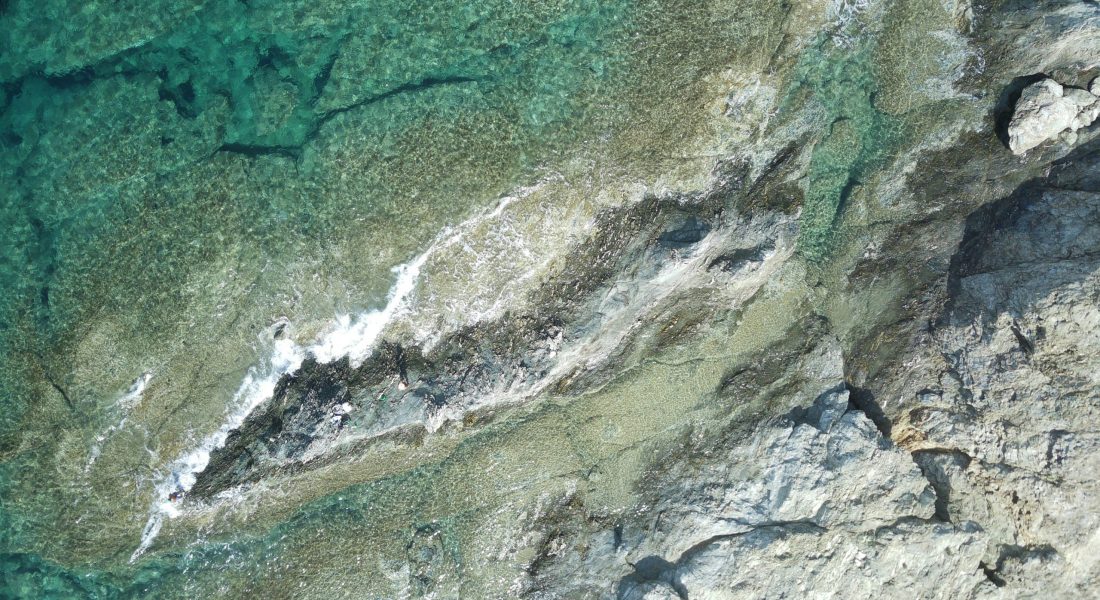Geospatial data is everywhere now – from the maps you check before a road trip to the environmental reports guiding city planning. Behind the scenes, there’s a whole network of companies collecting that information using satellites, drones, and smart algorithms. Their job is to turn raw geographic details into something useful for businesses, governments, and researchers. It’s more than just taking snapshots from above – it’s figuring out what those images actually mean, especially as landscapes, cities, and natural environments are constantly changing.
What’s really changed in recent years is how traditional mapping has teamed up with artificial intelligence and machine learning. The result? Faster updates, sharper detail, and tools that can spot things like crop health changes or traffic patterns almost in real time. In the list below, we’ll walk through some of the major players in this field – how they operate, the tech they rely on, and why their data is becoming so important across industries.

1. FlyPix AI
At FlyPix AI, we use artificial intelligence to transform raw satellite and aerial imagery into actionable insights. Our platform helps users detect objects, track changes over time, and spot anomalies in complex geospatial data. This detailed surface analysis supports industries like agriculture, urban planning, environmental monitoring, and construction by providing clear, up-to-date information.
As one of the geospatial data collection companies, we focus on making advanced AI tools accessible through a no-code platform. Users can create and train custom models tailored to their specific projects without needing programming skills. The platform supports a wide range of data sources, including drones, satellites, hyperspectral sensors, lidar, and Synthetic Aperture Radar (SAR), and offers subscription plans that fit individual researchers as well as large organizations.
Key Features:
- No-code AI platform for object detection, segmentation, and change tracking
- Supports satellite, drone, hyperspectral, lidar, and SAR imagery
- Interactive tools for training custom AI models
- Real-time dashboards, heatmaps, and vector data export
- Enterprise support including API access and white-label options
Services:
- Object detection and localization in geospatial imagery
- Change and anomaly detection over time
- Tracking of dynamic objects
- Custom AI model development for tailored analytics
- Integration with existing GIS platforms
- Heatmap generation for data visualization
Contact and Social Media Information:
- Website: flypix.ai
- Address: Robert-Bosch-Str. 7, 64293 Darmstadt, Germany
- Phone: +49 6151 2776497
- Email: info@flypix.ai
- LinkedIn: www.linkedin.com/company/flypix-ai

2. Esri
Esri is known for ArcGIS, a mapping and spatial analysis platform used around the world. Governments, utilities, transport companies, and environmental organizations all use it to manage and make sense of geographic data. You can run ArcGIS on your desktop, in the cloud, or on mobile – so it fits into a wide variety of workflows.
The software connects with many different datasets and also offers APIs and SDKs so developers can build their own mapping applications. Beyond the tech, Esri provides training, support, and a global partner network to help organizations get the most out of their GIS setup.
Key Features:
- ArcGIS platform for mapping and spatial data analysis
- Desktop, cloud, and mobile GIS applications
- Integration with external datasets and mapping services
- APIs and SDKs for custom development
Services:
- Licensing for desktop and cloud GIS software
- Developer tools and integration services
- Access to ready-to-use geographic datasets
- Training and technical support programs
Contact and Social Media Information:
- Website: www.esri.com
- Address: 380 New York Street, Redlands, California, United States of America
- Phone: +1 909 793 2853
- E-mail: accounts@esri.com
- LinkedIn: www.linkedin.com/company/esri
- Twitter: x.com/Esri
- Facebook: www.facebook.com/esrigis
- Instagram: www.instagram.com/esrigram

3. Hexagon
Hexagon is a tech company that blends hardware and software to help capture, process, and analyze geospatial data. Their work touches a lot of industries – construction, mining, agriculture, manufacturing, and even public safety. Depending on the project, they might provide surveying tools, reality capture systems, mapping software, or industrial automation solutions.
The company splits its operations into several divisions. Geosystems handles spatial data collection and processing tools, while the Safety, Infrastructure & Geospatial group focuses on managing assets and urban environments. Other branches work on manufacturing intelligence and metrology. Together, these pieces give clients ways to measure the physical world and use that data for planning, monitoring, and decision-making.
Key Features:
- Measurement and geospatial technology solutions
- Multiple industry-focused divisions
- Reality capture and mapping platforms
- Industrial metrology and automation systems
Services:
- Surveying and mapping technology
- Data management and geospatial information systems
- Digital twin and reality capture solutions
- Technical support and training services
Contact and Social Media Information:
- Website: hexagon.com
- LinkedIn: www.linkedin.com/company/hexagon-ab
- Twitter: x.com/HexagonAB
- Facebook: www.facebook.com/HexagonAB
- Instagram: www.instagram.com/hexagon_ab

4. Mapbox
Mapbox offers a platform for building custom maps and location-based applications. It’s used in everything from delivery services to travel apps, giving developers control over how maps look and what information they show. They provide APIs and SDKs for web and mobile, so it’s possible to add routing, geocoding, and spatial analysis to almost any digital product.
One of Mapbox’s strengths is customization. Developers can match maps to a brand’s style, layer in live data, and run complex geospatial queries. The system is built for scale and real-time updates, which means it can handle high volumes of location data without slowing down.
Key Features:
- Platform for custom map design and deployment
- APIs and SDKs for web and mobile integration
- Routing, geocoding, and spatial analysis tools
- Real-time data processing capabilities
Services:
- Custom map creation and styling tools
- Developer support and documentation
- Integration with location-based services
- Scalable cloud-based mapping infrastructure
Contact and Social Media Information:
- Website: www.mapbox.com
- LinkedIn: www.linkedin.com/company/mapbox
- Twitter: x.com/mapbox
- Instagram: www.instagram.com/mapbox

5. Google Maps
Google Maps is probably the most widely recognized mapping service out there. It provides interactive maps, satellite imagery, and real-time navigation for drivers, cyclists, pedestrians, and public transit riders. Alongside directions, it includes traffic data, business listings, and user reviews.
On the developer side, the Google Maps Platform offers APIs to embed maps into websites or apps, pull in geospatial data, and perform location-based queries. These tools are used by companies of all sizes, from small startups to global logistics firms.
Key Features:
- Interactive maps and satellite imagery
- Navigation and route planning for multiple transport modes
- Real-time traffic and transit data
- Developer APIs for geospatial integration
Services:
- Web and mobile mapping applications
- Location and place data APIs
- Geocoding and routing services
- Integration with Google Cloud services
Contact and Social Media Information:
- Website: google.com/maps
- Address: 111 8th Ave, New York, NY 10011
- E-mail: press@google.com
- LinkedIn: www.linkedin.com/company/google
- Twitter: x.com/google
- Facebook: www.facebook.com/Google
- Instagram: www.instagram.com/google

6. Xyzt.ai
Xyzt.ai runs a cloud-based platform for making sense of large amounts of movement and sensor data. It’s built for industries like transport, logistics, maritime operations, and smart cities. Data can come from GPS trackers, AIS signals, IoT devices, and other sources.
The platform lets users explore datasets interactively, spot trends, and build reports. Features like heatmaps, route analysis, and event detection help turn raw location data into something actionable. It’s also designed to handle data streams that update constantly, so the information stays fresh.
Key Features:
- Visualization and analysis of movement and sensor data
- Support for multiple data sources
- Interactive exploration and reporting tools
- High-frequency data processing
Services:
- Cloud-based analytics platform
- Data integration and management tools
- Visualization and reporting capabilities
- API access for custom applications
Contact and Social Media Information:
- Website: xyzt.ai
- Address: Philipssite 5, B-3001 Leuven, Belgium
- Email: info@xyzt.ai

7. SafeGraph
SafeGraph focuses on providing detailed datasets about physical locations. This includes coordinates, property boundaries, and foot traffic trends. Businesses and planners use this kind of data for things like deciding where to open a store, studying city movement patterns, or analyzing market areas.
They update their datasets regularly and make them available through APIs, so the information can be pulled directly into analytics platforms or business intelligence tools. Their data covers points of interest, building footprints, and aggregated visit patterns, all sourced from anonymized mobile device signals.
Key Features:
- Place, boundary, and mobility datasets
- Regularly updated geographic coverage
- APIs for data access and integration
- Aggregated visit and movement metrics
Services:
- Place and property datasets
- Mobility and foot traffic data
- Data integration support
- API-based access for applications
Contact and Social Media Information:
- Website: www.safegraph.com
- Email: press@safegraph.com
- LinkedIn: www.linkedin.com/company/safegraph
- Twitter: x.com/safegraph
- Facebook: www.facebook.com/SafeGraph

8. Trimble
Trimble develops tools and software for positioning, surveying, and managing geospatial data. Their product lineup includes GNSS receivers, laser rangefinders, UAV systems, and mapping software. They work with industries like construction, agriculture, transportation, and utilities to help them collect and process spatial information both in the field and in the office.
The technology supports a wide range of applications, from high-precision surveying to monitoring infrastructure and tracking assets. Their software connects with different datasets and is built to fit industry-specific workflows. Trimble also offers training and technical support so teams can get the most out of their systems.
Key Features:
- GNSS, laser, and optical positioning equipment
- Geospatial data processing and mapping software
- Support for aerial and ground-based data collection
- Integration with industry-specific workflows
Services:
- Surveying and mapping solutions
- Fleet and asset management systems
- Construction and agriculture technology platforms
- Technical support and training services
Contact and Social Media Information:
- Website: www.trimble.com
- Address: 10368 Westmoor Drive, Westminster, CO 80021 USA
- Phone: +1 (720) 887-6100
- LinkedIn: www.linkedin.com/company/trimble
- Twitter: x.com/TrimbleCorpNews
- Facebook: www.facebook.com/TrimbleCorporate
- Instagram: www.instagram.com/trimble_official

9. Privateer
Privateer’s work is focused on space-based data, particularly tracking what’s in Earth’s orbit. They monitor satellites, debris, and other objects to provide situational awareness for space operations and policy planning. This helps satellite operators, regulators, and researchers make better decisions about managing orbital traffic.
Their platform aggregates orbital data and makes it easier to visualize and analyze. That means spotting collision risks, planning satellite maneuvers, and supporting debris reduction strategies. It’s all about keeping space safer and more organized as the number of objects up there keeps growing.
Key Features:
- Space situational awareness platform
- Tracking of satellites and orbital debris
- Data visualization and risk assessment tools
- Support for regulatory and operational planning
Services:
- Orbital object tracking and monitoring
- Collision risk analysis
- Satellite maneuver optimization tools
- Data integration for space operations
Contact and Social Media Information:
- Website: www.privateer.com
- LinkedIn: www.linkedin.com/company/privateerspace
- Twitter: x.com/privateerspace
- Instagram: www.instagram.com/privateer.space

10. Spatial GIS Services
Spatial GIS Services helps organizations set up and use geographic information systems for mapping, analysis, and planning. They work with clients in areas like city planning, environmental management, and transport to make better use of spatial data.
Their services include creating GIS databases, running spatial analyses, and developing custom applications. They also provide training so clients can maintain and expand their GIS capabilities on their own.
Key Features:
- GIS consulting and implementation
- Mapping and spatial data analysis
- Application development for geospatial use
- Training and technical support
Services:
- GIS database design and maintenance
- Spatial analysis for planning and management
- Custom GIS application development
- On-site and remote training
Contact and Social Media Information:
- Website: spatialgisservices.com
- Phone: (301) 442-3914
- E-mail: Kendrick@spatialgisservices.com

11. Kermap
Kermap specializes in processing and analyzing satellite imagery for use in agriculture, environmental monitoring, and urban planning. Their work turns raw satellite data into ready-to-use information that can show changes in land use, monitor vegetation, or track environmental conditions.
They provide both pre-processed datasets and custom analysis solutions. Clients can access results through online platforms, making it easy to plug them into planning and decision-making workflows.
Key Features:
- Satellite imagery processing and analysis
- Solutions for agriculture, environment, and urban planning
- Custom analytics and reporting tools
- Online access to processed datasets
Services:
- Land use and vegetation monitoring
- Environmental condition assessment
- Custom geospatial data analysis
- Data delivery via online platforms
Contact and Social Media Information:
- Website: kermap.com
- Address: 1137a Avenue des Champs Blancs, 35510 Cesson-Sévigné
- Phone: +33 (0)2 30 96 07 66
- Email: hello@kermap.com
- LinkedIn: www.linkedin.com/company/kermap
- Twitter: x.com/kermap_info
- Facebook: www.facebook.com/kermap

12. Maxar
Maxar Technologies combines space hardware with Earth observation expertise. They operate satellites that capture high-resolution imagery used in mapping, defense, environmental monitoring, and disaster response. They also design sensors and spacecraft systems for both government and commercial clients.
On top of the imagery, Maxar provides analytics that blend satellite data with other sources to detect changes, model terrain, or monitor infrastructure. Their services help industries that depend on precise, up-to-date geographic information.
Key Features:
- High-resolution satellite imagery
- Earth observation and geospatial analytics
- Spacecraft systems and sensor technology
- Global data coverage for multiple industries
Services:
- Satellite imagery acquisition and delivery
- Geospatial data processing and analysis
- Change detection and terrain modeling
- Custom monitoring solutions
Contact and Social Media Information:
- Website: www.maxar.com
- Address: 3875 Fabian Way, Palo Alto, CA 94303
- Email: spacecommunications@maxar.com
- LinkedIn: www.linkedin.com/company/maxar-technologies-ltd
- Twitter: x.com/Maxar
- Facebook: www.facebook.com/MaxarTechnologies
- Instagram: www.instagram.com/maxartechnologies
Conclusion
These companies approach geospatial data collection from many angles – satellites, drones, mapping software, on-the-ground sensors, and even space debris tracking. Some focus on building tools for developers, while others specialize in delivering ready-to-use datasets or full analysis services.
Whether it’s for planning a city, monitoring the environment, or managing infrastructure, the ability to gather and make sense of location data is becoming more valuable every year. The variety of solutions on this list shows just how many ways geospatial intelligence is shaping the way organizations work and make decisions.
